Birthday: November 23, 1926
Nationality: Indian
Died At Age: 84
Sun Sign: Sagittarius
Also Known As: Sathyanarayana Raju
Born In: Puttaparthi
Famous As: Spiritual Guru
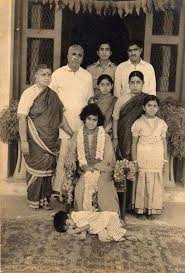
Family:
Father: Peddavenkama Raju Ratnakaram
Mother: Easwaramma
Siblings: Janakiramiah, Parvathamma, Ratnam Sesham Raju, Venkamma
Died On: April 24, 2011
Place Of Death: Puttaparthi
Founder/Co-Founder: Sri Sathya Sai University

Sathya Sai Baba was an Indian guru who claimed to be the reincarnation of Sai Baba of Shirdi. Known for performing ‘miracles’ such as materialization of holy ash and small objects, resurrections, clairvoyance, and miraculous healings, he was both a famous and a controversial figure. He had hordes of ardent devotees who revered him as a great religious guru while he also had detractors who accused him for being a fraud. Nonetheless, he was a major religious figure in India and the Sathya Sai Organisation founded by him continues to be a popular organization with over 1,200 Sathya Sai Centres (branches) in 126 countries. He was born into a pious family in British India, and it is believed that his birth was heralded by miracles. Some sources even state that his conception was miraculous. He grew up to be an intelligent and compassionate boy who at the age of 14 announced to his family that he was the reincarnation of Sai Baba of Shirdi, a famous Indian saint who had died eight years before Sathya was born. He went on to become a spiritual teacher and founded the Sri Sathya Sai Organization in order “to enable its members to undertake service activities as a means to spiritual advancement.”
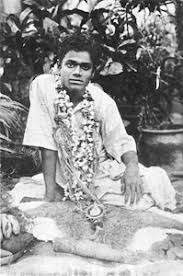
Childhood & Early Life
He was born as Sathyanarayana Raju on 23 November 1926 in Puttaparthi, Madras Presidency (now Andhra Pradesh), British India. His parents were Meesaraganda Easwaramma and Peddavenkama Raju Ratnakaram. His mother asserted that Sathya’s birth was by miraculous conception—she said that a strange bluish glow transformed itself into a luminous orb and entered into her womb near the village well which resulted in her pregnancy. Sathya had four siblings.
He grew up to be a very intelligent child and was unusually talented in devotional music, dance and drama. From a young age he was more inclined towards spirituality than he was towards worldly engagements.
A very significant incident happened when Sathya was 14 years old. On 8 March 1940, he was apparently stung by a scorpion and lost consciousness for several hours. He behaved strangely over the next few days and doctors diagnosed his symptoms as hysteria. His concerned parents consulted many priests, doctors and exorcists but none could “cure” him of this supposedly strange malady.
On 23 May 1940, Sathya materialized ‘prasad’ and flowers from thin air, further shocking his parents. Then on 20 October the same year he proclaimed himself to be the reincarnation of Sai Baba of Shirdi—a famous saint who had died eight years before Sathya was born.
Sathya Sai Baba also declared that his mission was to teach humanity the principles of truth, righteous conduct, peace, and divine love in order to bring about their spiritual growth.

Later Years
Sathya Sai Baba began spreading divine knowledge to the masses and soon gained a devoted following. In 1944, a temple was built near the village of Puttaparthi to facilitate the growing number of Sai Baba devotees.
In 1948, he began overseeing the construction of Prashanthi Nilayam which was to become his main ashram. Sathya Sai Baba was the main engineer and architect who directed the construction for the entire project. The ashram was opened on 23 November 1950, his 24th birthday.
Over the years he became very famous for his miraculous healing powers and his philanthropic activities. He established a small free general hospital in the village of Puttaparthi in 1954 for the benefit of the poor.
He founded The Sri Sathya Sai Organization in the 1960s “to enable its members to undertake service activities as a means to spiritual advancement.” The first Sai Centres were started in India under the name of the “Sri Sathya Sai Seva Samithi”.
He established three primary mandirs or spiritual centres in India: “Dharmakshetra” or “Sathyam” in Mumbai in 1968, “Shivam” in Hyderabad in 1973, and “Sundaram” in Chennai in 1981.
Sathya Sai Baba founded the Sri Sathya Sai University in 1981. The university provides free education on three campuses: Ananthapur (for women), Prasanthi Nilayam (for men), and Brindavan (for men, on the outskirts of Bangalore).
He established a network of free hospitals including Sri Sathya Sai General Hospital, Bangalore, which provides complex surgery, food and medicines free of cost. In addition he established several general hospitals, two specialty hospitals, eye hospitals and mobile dispensaries. His trust also conducts medical camps in rural and slum areas in India.
In spite of all his philanthropic and spiritual works, he was a highly controversial figure. He had been accused of several allegations including sleight of hand, sexual abuse, money laundering, fraud in the performance of service projects, and murder. However, he and his followers strongly rejected any allegations of misconduct and stated that these allegations were attempts by his detractors to defame him.
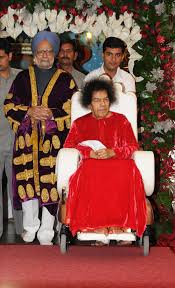
Major Work
Sathya Sai Baba founded the Sri Sathya Sai Organization in the 1960s through which several hospitals, educational institutes, ashrams and drinking water supply projects were established. The organization has over 1,200 Sathya Sai Centres (branches) in 126 countries and continues to provide services to humanity even years after his death.
Personal Life & Legacy
He fractured his hip in a freak accident in 2003 and started using a wheelchair from 2004. He gave fewer public appearances during his later years.
Sathya Sai Baba died on 24 April, 2011, after nearly a month of hospitalization for respiration-related problems. He was buried with full state honours on 27 April 2011 and his burial was attended by several prominent personalities like then Indian Prime Minister Manmohan Singh, then Gujarat Chief Minister Narendra Modi, Cricketer Sachin Tendulkar, etc.
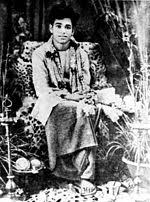
Sai Baba’s Birth and Childhood
Sai Baba was born in Puttaparthi, a remote village in southern India, on November 23, 1926, and given the family name of Satyanarayana Raju. Stories of the family and villagers tell of “miracles” which began to occur shortly before his birth. Musical instruments in the family home, for example, are said to have played by themselves. Another unusual incident is said to have occurred shortly after the baby was born. Someone noticed movement under his blankets on the floor and he was quickly snatched up. Discovered beneath the blankets was a deadly cobra, which for some reason had not harmed the baby. (The cobra, coincidentally or not, is the symbol of Shiva, of Hinduism’s holy trinity.)
From early childhood it was apparent that young Satya was quite different from his playmates. Although his family ate meat, he himself was a natural vegetarian, who abhorred the thought of killing animals. He was extremely helpful to all in the village, doing work unselfishly, frequently bringing beggars home to be fed by his parents—though they often scolded him for what they felt to be unwarranted generosity on his part. He was called “guru” by his playmates, leading them in devotional songs before school and fascinating and amusing them by taking candy and playthings from an apparently empty bag.
Then a mysterious incident occurred when Satyanarayana was thirteen. One day while playing outside, he leaped into the air with a shriek, holding his bare foot. His family feared he had been stung by a scorpion and would not survive. But he slept that night without apparent pain or sickness. Then twenty-four hours later, he fell unconscious and remained so for a day. When he awoke, his behavior was strange, alternating between periods of unconsciousness and what appeared to be trance-like states. He began chanting and quoting long Sanskrit passages of poetry and philosophy far beyond the scope of his formal education.
At times he became stiff and appeared to those around him to leave his body, then described distant places which his parents said he had never visited and people whom to their knowledge he had never known. He laughed and cried, explained complicated religious doctrines. Could he be possessed by evil spirits?
Satya endured a period of torture as his parents took him to exorcists throughout the countryside. One famous and feared exorcist, to whom the boy’s demon had become a personal challenge, shaved Satya’s head and cut three crosses into his skull, then poured caustic material into the wound and into his eyes until they were swollen almost shut. Finally, his parents could stand no more of this ordeal and called a stop to it, though their son had apparently not been cured.
Baba subsequently stated that he was demonstrating at this time that he is beyond pleasure and pain, beyond duality. He has disclosed that there was in fact no actual scorpion sting: No such bite could create a Satya Sai Baba, and if it could, then scorpions should he objects of the highest veneration and worship.
Two months after the supposed sting, in May 1940, Satya’s father saw a crowd gathering around his son. He appeared to be manifesting candy and fruit out of thin air, and many people were falling to the ground, calling him an incarnation of God. Confused and frustrated by his son’s strange behavior and now by this display of sleight-of-hand or, worse, black magic, Satya’s father picked up a stick and approached threateningly. “Who are you… who are you?” he demanded angrily.
In a calm but firm voice, the boy announced: I am Sai Baba. Then he proceeded to relate how he had chosen this particular family for his incarnation in answer to the prayers of a devout ancestral sage. He was, he said, the reincarnation of a little-known but much respected Moslem holy man, named Sai Baba of Shirdi, who dressed like a Moslem but wore ash on his forehead like a Hindu. The original Sai Baba had died eight years before Satya was born—the length of time he had reportedly told his devotees would elapse before his reincarnation.
Naturally, it was difficult for many in the village to accept this boy, unusual and charming though he was, as the actual reincarnation of a man regarded by his followers as a saint. Young Satyanarayana was beginning to be quite a mystery indeed. Then a couple of months later, on Thursday—Guru Day in India—a group of questioning villagers approached him, pleading, “Show us a sign!”
With a quick and unexpected gesture, Satya threw a bunch of jasmine flowers onto the floor. There, it is reported, they clearly spelled out—in Telugu script, the language of the village—”Sai Baba.”
Soon afterwards, Satya Sai Baba told his family that he belonged with them no longer, that his devotees were calling and that he had to leave. He left school in October of his thirteenth year and began to gather followers around him. They grew in number until it became necessary to establish an ashram, where many could live with their guru, and where those seeking his guidance could meet with him. The construction of Prasanthi Nilayam (Abode of Eternal Peace) continues even to the present in an attempt to accommodate Sai Baba’s swelling number of devotees. Here and at Brindavan, his summer residence, Baba has received millions of people from India and around the world.
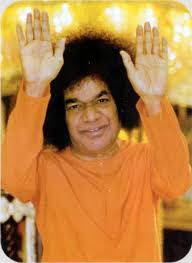
His Life – A Summary
Sri Sathya Sai Baba was born in Puttaparthi on Nov 23, 1926 – an auspicious Monday in the lunar month of Kartika, when Lord Shiva is especially adored. He was given the name Sathyanarayana Raju. What intrigued His mother Easwaramma, most was the unbounded compassion her little Sathya had particularly for the poor and downtrodden. Even as a toddler, He insisted that the beggar at the door be served well in spite of their own limited means and would often give His own share to the needy. When He began school, His playmates were inspired by His ability to lead them to be socially responsible, spiritually aware, endowed with individual and national character. His friends were often fascinated by His extraordinary powers of creating things out of thin air, knowing the future, deep understanding of scriptural wisdom and so on.
The inexplicability of His actions greatly disturbed His father Sri Ratnakaram Pedda Venkama Raju, and on May 23, 1940, he angrily accosted Sathya to reveal His true identity. Sathya just took a few flowers and flung them down which arranged themselves to read “I am Sai Baba.” Later that year, on the morning of Oct 20, halfway through the school day, Baba suddenly returned home, cast aside His books and dramatically declared, “I am no longer your Sathya… I am Sai. I have my work, I cannot wait any longer.” Thus, that day forward Sathyanarayana Raju became Sathya Sai Baba.
From that epochal moment on, kings to commoners started thronging to His presence seeking solace and succour as Baba cancelled an incurable disease of one, sorted out familial problems of another, and likewise. His growing fame, accompanied by rising ridicule from envious quarters, rattled His elder brother Seshama Raju, who wrote a letter cautioning Him of His activities. In His reply, dated May 25, 1947, Baba emphatically stated that He has a ‘Task’ to ‘foster all mankind with bliss’, a ‘Vow’ to ‘lead all onto the path of righteousness’, and a ‘Work’ of ‘removing the suffering of the distressed’, also assuring that He would never give up on those who attach themselves to Him.
Towards this end, in the 1960s Baba germinated the Sri Sathya Sai Seva Organisations in India, through which people across religions, class and caste, could collectively engage in selfless service and foster the eternal values of Truth, Righteousness, Peace, Love and Non-violence, for their own spiritual uplift. In no time the movement grew global to more than 126 countries with Prasanthi Nilayam being its epicentre.
While millions of inspired individuals took to practising selfless love, to create working models for them to emulate, Baba founded the Sri Sathya Sai Central Trust in 1972. Since then this umbrella institution is engaged in the implementation of trailblazing projects like free primary to tertiary-care hospitals, free education from primary schooling to doctoral research, free drinking water to remote villages, free housing rehabilitation initiatives, etc., demonstrating to the world new paradigms to raise society’s quality of life inspired by love, service and universal brotherhood. Baba, Himself exemplified this higher life incessantly for 86 years where the power of pure love was in glorious action.
On His 83rd and 85th Birthdays in Nov 2008 and 2010, on His devotees’ request, Baba rode on a golden chariot. Only later did everyone realise, those were indeed symbolic of the golden culminating moments of Baba’s earthly sojourn. Baba discarded His bodily vesture on April 24, 2011. The devotees miss His physical form, nevertheless, they continue to experience His guidance and grace, as enigmatically as ever. The Universal Consciousness that is Sri Sathya Sai eternally lives on.
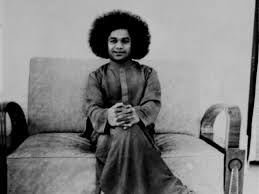
THE CHILDHOOD SAGA
The Raju family of Puttaparthi was noted for its piety since the days of the renowned sage, Venkavadhootha, a saintly ancestor who was looked upon as a Guru in hundreds of villages around. Not only did the family build and endow the Gopalaswami Temple (dedicated to Lord Krishna), but Sri Ratnakaram Kondama Raju, the grandfather of Baba’s physical frame, dedicated a temple to Sathyabhama, consort of Lord Krishna, a deity to whom this type of homage is seldom offered in any part of India. Peasants by vocation, they were known for their musical and dramatic talent and were much involved in the propagation of the sacred scriptures through village plays and musicals. Consequently, the family was given the name ‘Bhat Raju’ (Bhat – priest).
Sri Kondama Raju was a pious soul who lived out his hundred and ten years of earthly existence in the unceasing contemplation of the Lord. His wife Srimathi (Smt) lakshmamma predeceased him by twenty years. They had two sons who were both named after Sage Venkavadhootha – Sri Pedda Venkama Raju and Sri Chinna Venkama Raju. Sri Pedda Venkama Raju, the elder son, was married to Easwaramma, daughter of Sri Meesaraganda Subba Raju of Kolimigundla of Kurnool district. Sri Pedda Venkama Raju and Smt Easwaramma were blessed with a son and two daughters in that order, Seshama Raju, Venkamma, and Parvathamma.
Some years passed and Easwaramma longed for another son. She prayed to the village gods, performed Sathyanarayana Puja and observed a number of rigorous vows. One day, an extraordinary incident occurred that heralded the descent of the divine into her womb. Easwaramma had gone to the village well to draw water. There, she noticed a strange bluish glow that transformed itself into a luminous orb. The ball of light then glided towards her and entered her being. Shortly thereafter, to the joy of her family, Easwaramma found herself in the family way.
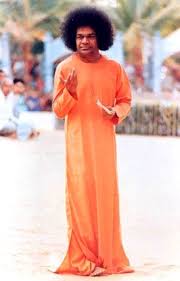
Divine Prelude
After a while, mysterious indications of the impending incarnation occurred in Sri Pedda Venkama Raju’s house. For example, there was the twang of the tambura! Since the brothers and the father were all interested in the village operas, there was a big tambura (a string instrument) and a maddala (drum). As the birth of the son for whom Mother Easwaramma prayed, announced itself as imminent, the house was awakened at midnight, and sometimes even later, by the tambura twanging automatically, and the maddala beating rhythmically as if an expert Hand was playing on it! One Shastri (Vedic scholar), whom Sri Pedda Venkama Raju approached for an explanation, said that it was an auspicious occurrence: it meant the presence of a Shakthi, a beneficent Power, conferring harmony, spiritual elevation and joy.
The Advent
23rd of November, 1926, the Hindu year of Akshaya, meaning, the Never-declining, the Ever-full. It was the time of sunrise and the villagers were chanting the names of Lord Shiva, remembering that the day was Karthika Somavara, a Monday of the Holy Month of Karthika, devoted to the puja (worship) of Shiva. That day was made even more auspicious for Shiva worship because the ascendant star was Ardra (the star of Shiva). On this day, when these rare and propitious signs came together, the people thronged the temples of the Lord to offer special pujas and pray for His benediction.
The Mother had also just finished her Sathyanarayana Puja in accordance with her vows, for, even while she was going through the final rituals, the pangs forewarned her. When Easwaramma announced the pangs, word was sent to the mother-in-law, Smt Lakshmamma, the pious lady of the house; but, it became known that she had gone to the house of the priest to perform the Puja of Sathyanarayana; the messenger discovered her there and urged her to return; but she was so confident of the Grace of Lord Sathyanarayana, so steadfast in her devotion, so disciplined in her religious adherence, that she refused to be hustled!
She sent word that she would bring with her the sacred offerings after the Puja and that on no account would she allow her prayers to be interrupted! She finished the entire ritual with full concentration, came home and gave her daughter-in-law the flowers and the sacred water. Easwaramma partook of the blessings of the Lord. Next moment, the Lord was born and the Sun rose above the horizon!
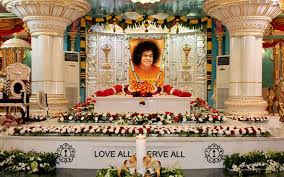
The Divine Child
A very significant event occurred soon after the birth of the child, which revealed the divinity of the baby. One day, it was noticed that the bed of clothes on which the baby was lying was being moved up and down in a peculiar way by something underneath. They watched with bated breath and when they looked under the bed they found a cobra underneath! The snake was playing the role of Sesha to the Seshasai! (Sesha, according to Hindu belief, is the serpent on whose bed of coil Lord Vishnu rests.)
The baby was named Sathyanarayana because there seemed to be a significant relationship between the worship to that God and the realisation of the mother’s cherished desire. When the Namakaranam (Naming Ceremony) was performed and the name was whispered in the ear; it seems the baby smiled, for the suggestion to give that name must have emanated unobtrusively from Itself! The embodiment and exponent of Truth could not give Himself a more appropriate name.
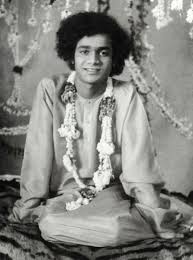
The little “Brahmajnani”
Little Sathya soon became the pet of the entire village of Puttaparthi and the farmers and cowherds vied with each other in fondling it and feeding it and playing with its lovely silken curls. Its charming smile attracted everyone. Like a lighted lamp, Sathya moved about the house and laughter tinkled in the street when He lisped His sweet vocabulary of sounds.
The villagers soon started referring to Him as “Brahmajnani”, the knower and proponent of Brahman or Godhood. Even at a young age, Sathya was known for His extraordinary love and compassion towards creation and aversion towards harming any creature. His heart melted at human suffering. Whenever a beggar appeared at the door and raised his cry, Sathya abandoned His play and rushed in, to force His sisters to dole out grain or food. The elders in the house tried to dissuade Him saying, “Look here! You may give him food; but, mind you, you will have to starve.” That did not daunt the child; He used to run inside and bring food to the hungry man at the door; and stay away from dinner or lunch, himself. Nothing and nobody could persuade him to come to His plate, which was left untouched!
While others in the family relished non-vegetarian food, little Sathya would advise them to desist from such cruel habits. Whenever such food was cooked in the household, the boy used to run to the Karnam’s (village chief) house, and partake of the food offered by Subbamma, the aged lady residing there, for they were Brahmins and vegetarians.
So distinct was His behaviour that a wag once nicknamed Him “the Brahmin child”! Yes, it was a fitting description. Little did that wag know that, while in the previous body, this child, so laughed at now, had declared at Shirdi, “This Brahmin can bring lakhs of men on the White path and take them to their destination!”

THE EARLY SCHOOL DAYS
At the age of eight, Sathya was declared fit to proceed to the Higher Elementary School at Bukkapatnam, about two and a half miles from Puttaparthi. He had to start early, after a meal of cold rice and curds or cooked ragi (maize), rice and chutney, carry the afternoon meal in a bag, and with His companions make the arduous trek daily to Bukkapatnam.
Sathyanarayana was a precocious child, learning more things than anyone could teach Him and much quicker than most; He could sing all the songs and Stotras (prayers) that were recited at the village operas. He even composed at the tender age of seven or eight, some touching songs for the cast, which was gladly accepted by them for public presentation!

The Pandhari Bhajan group
When He was about ten years of age, Sathya formed a ‘Pandhari Bhajan’ group in the village of Puttaparthi. The group consisted of about sixteen to eighteen boys dressed uniformly in ochre clothes, each holding a flag in the hand and wearing jingling anklets. They all danced to the tune of folk-songs and ballads, describing the yearning of pilgrims for Lord Panduranga’s Darshan. He also added some Bhagavatha songs of His own. It was noticed that He added to these traditional themes, songs on a pilgrimage to a new shrine of which no one had heard, and the majesty of a new Deity of whom they had not even the faintest idea, Shirdi and Sai!
Moreover, it was observed that when an infection of cholera swept like a poisonous miasma over the area and wiped out entire families in the surrounding villages, Puttaparthi did not feel the blast of death. Wise men told one another that the Divine Atmosphere generated by the Bhajan group was responsible for saving their lives.
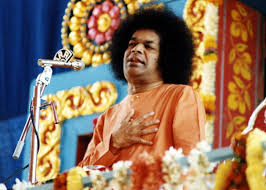
At Kamalapuram
Sathya had to move to Kamalapuram, a small town about 200 kilometres from Puttaparthi, with His brother Seshama Raju. His parents planned to give Sathya a college education, so that He may become an officer! And hence, they were prepared to part with their beloved son and send Him to Kamalapuram to the Board Middle School there, so that His studies could be continued.
Sathya was a quiet, well-behaved boy and the favourite of His teachers. Once, He sang the prayer song before the curtains went up on a drama in the town and those who heard His sweet voice spread the news that a ‘fine musician’ had come to town. Prayer songs at functions like public meetings became His monopoly thereafter.
A merchant by name Kote Subbanna who sold medicines, tonics, glassware, umbrellas, etc. came to know of Sathya’s talents and approached Him for a ditty to market his new product. He gave Him the necessary information and by evening, Sathya was ready with an attractive Telugu song, which was sung in chorus by His friends and Him. They used to march along the streets, with placards in their hands, singing Sathya’s slogan-filled jingle and evidently enjoying their task!
A word may be said about Sathya and His involvement in the theatrical activities at school. Sri Thammi Raju, the teacher-in-charge, once asked Sathya, who was only twelve years old then, to produce a play in Telugu. Sathya plunged into the work very enthusiastically. The drama was a great success, not only because the hero of the play was a little boy, a role enacted by Sathya himself, but, chiefly because it had as its theme the eternal sin of man – hypocrisy. The title of the play was “Cheppinattu Chesthara?” meaning “Do we practise what we preach?”
Meanwhile, Seshama Raju was transferred to Uravakonda. He decided to take Sathya along with him with the intention of admitting Him at the Sri Karibasavaswami District Board High School there. Accordingly, Sathya accompanied His elder brother to continue His studies at Uravakonda. The town of Uravakonda would be witness to the grand and mysterious events that would mark the momentous transformation of the young child into a great spiritual master who would change the very destiny of mankind.

Mysterious Turn of events at Uravakonda
Sathya was sought after by people who had lost articles of value, for He had brought with Him to Uravakonda the reputation for intuitive perception, which revealed to Him the place where anything was! Baba says that in those days, He used to give His friends only the first and last letters of the names of the persons with whom the lost articles could be found. He left them with their own resources to recover the goods.
On March 8, 1940, the whole town was shocked to hear that a big black scorpion had stung Sathya in the twilight hours of the evening. However, Sathya slept that night without any sign of pain! Everyone felt relieved, only to become anxious once again when the next evening, Sathya fell unconscious and became stiff; He would not speak and breathing appeared faint. Seshama Raju brought in a doctor, who gave an injection and left behind a mixture. Sathya was apparently unconscious throughout the night. The doctor came again in the morning and declared that the boy was out of danger!
An incident happened in the night which showed that Sathya was not ‘unconscious’ but, that He was actually subconscious! Someone suggested that the local deity be propitiated, because the condition of the boy may be due to some evil spirit that possessed Him. So, volunteers hurried to the temple and offered worship, placed flowers and incense, and broke a coconut at the altar. At that very moment, Sathya, who was to all intents ‘unconscious’, said, “The coconut has broken into three pieces,” and when the volunteers came home with the offerings, they had with them three pieces and not the usual two!
Sathya got up in a day or two and began to behave in an extraordinary way. Baba has said that He Himself initiated the process of manifestation, for He could not wait any longer, playing about as a mere boy, with ‘brother’ and ‘sister’ and ‘classmates’ and other secular bonds. He wanted to demonstrate that He was beyond both ‘Visha’ and ‘Vishaya’, that neither the poison of the scorpion nor worldly attractions could ever affect Him.
Meanwhile, Sri Seshama Raju had informed his parents at Puttaparthi about the state of affairs at Uravakonda. He had written that Sathya was not answering anyone who spoke to Him, that it was a herculean task to make Him accept food, that He was spending the time mostly in silence but, sometimes bursting into song and poetry or reciting long Sanskrit slokas (hymns) and at times, expounding the highest Vedantic philosophy. The parents took about a week to reach the place, because of unforeseen and inexplicable difficulties.
Seshama Raju got nervous as to why the parents had not arrived. He decided to send someone to Puttaparthi to find out the reason for the delay. But, Sathya interposed and said, “You need not send for them now, they will be here in half an hour,” and true to His words, they came in, exactly thirty minutes later.
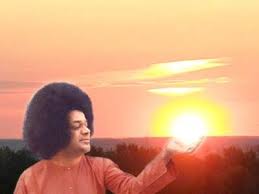
Divine Fortitude
The parents were beside themselves with worry at the condition of Sathya; He sang and spoke and behaved in such a queer manner. It was all so mysterious. At that time, someone gave information to the worried parents that there was an expert exorcist before whom no evil spirit dare wag its poison tail! He will cure Sathya perfectly and make Him fit to go to school, they assured.
The exorcist was a gigantic figure, terrible to behold, with blood-red eyes and untamed manners. He tried all his craft which he dared not experiment even with strong adult patients! For example, he shaved the head of the boy and, with a sharp instrument scored three ‘X’ marks on the scalp, from the top towards the forehead. Sathya sat through the pain without wilting. With the scalp injured and bleeding with those markings, the witch doctor poured on the open wound the juice of a lime, garlic, and other acidic fruits.
The parents who were watching the proceedings in utter despair were surprised, for there was not even a tear or a gasp of pain from the boy! But the exorcist was unrelenting and put the boy through even more terrifying trials until the parents could bear to see it no more. They wanted to save the boy from the jaws of that Yama (God of Death) in human form; they had seen and suffered enough. They paid him full fees and also gave some unasked gifts, and thanked him for all the ‘learning’ he had utilised.
When asked later as to why He chose to go through this diabolical adventure, Baba remarked, “Even after seeing all that fortitude and the miracle of a little boy passing unscathed through all that terror, even now, you are not convinced that I am Baba; how then would you have reacted if I just made the announcement one fine day? I wanted to make known that I am Divine, impervious to human suffering, pain or joy.”
Meanwhile, Sri Krishnamachari, a lawyer-friend from Penukonda, heard of these occurrences in the Raju household and came to the village to study the situation and offer whatever help he could. He had a good look and told Venkama Raju, “It is really more serious than I thought; take Him immediately to the Narasimha Temple (Lord Narasimha – the Man-lion incarnation of Lord Vishnu) at Ghatikachalam; that is the last chance”. On hearing these words, Sathya said, “Funny, is it not? I am already there at Ghatikachalam and you want to take Me to Myself!” The lawyer had no further inclination to cross-examine.

I am Sai Baba
On 23rd May 1940, Sathya rose from the bed as usual, but after some time, He called the members of the household around Him, gave them sugar candy and flowers taken from nowhere. At this, the neighbours too rushed in. He gave them each a ball of rice cooked in milk, flowers and sugar candy concretised by a mere wave of the hand. Meanwhile, Sri Venkama Raju came and he was incensed by what he thought was a trick, hiding things somewhere and producing them by sleight of hand. He wanted the chapter to be closed before it lengthened into a tragedy.
So, arming himself with a stick, he accosted Sathya and asked, “Are you a God, a ghost or a madcap? Tell me!” Prompt came the answer, the Announcement, that had been held back so long, “I am Sai Baba.”
At this, Venkama Raju was stunned into silence; the stick slid from his hands. He stood staring at Sathya trying to grasp the implications of that announcement – “I am Sai Baba.” But, Sathya continued, “I belong to Apasthamba Sutra; I am of the Bharadwaja Gothra; I am Sai Baba; I have come to ward off all your troubles; keep your houses clean and pure.”
The elder brother, Seshama Raju went near Him, and asked, “What do you mean by ‘Sai Baba’?” He did not reply but only said this much – “Your Venkavadhootha prayed that I will be born in your family. So, I came.” The father felt that Sai Baba was a Muslim spirit speaking through the boy and so, he asked, “What are we to do with you?” Prompt came the answer; “Worship Me!” “When?” “Every Thursday! Keep your minds and houses pure.”
One Thursday, someone challenged Sathyanarayana and asked Him, “If you are Sai Baba show us some proof, now!” Baba replied, “Yes, I shall” and asked for some jasmine flowers. With a quick gesture, He threw them on the floor and said: “Look.” They saw that the flowers had formed while falling, the Telugu letters, ‘Sai Baba’!
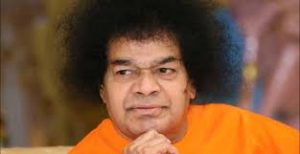
Divine Omnipresence
On an invitation from some townsmen in Hospet, Seshama Raju decided to take Sathya on a picnic to see if it might improve the mental health of the boy. Hospet is a few miles away from the ruins of Hampi, the capital city of the Emperors of the ancient Vijayanagara Kingdom in what is now the state of Karnataka.
There, they visited the temple of Lord Virupaksha, the patron deity of the Vijayanagara royal family. While the others in the party went into the temple to offer worship at the sanctum sanctorum, Sathya stood outside admiring the height and majesty of the Gopuram (tall pyramid-shaped roof of a temple). When the priest waved the flame of camphor before the Lingam (ellipsoid structure worshipped as Lord Shiva), they saw to their utter amazement, Sathya there inside the shrine! He was standing in a place of the Lingam, smiling and accepting their salutations.
Thinking that Sathya may have slipped into the shrine evading everybody’s notice, Seshama Raju went outside to verify whether He was still there. Yes, indeed Sathya was there, leaning on a wall and staring at the horizon! He rushed inside the sanctum sanctorum and, yet again, he found Sathya standing there and blessing everybody.
This incident confirmed their faith in Sathya as a Divine Manifestation. They offered special Puja (worship) to Him that day. Hospet was on its toes with expectation and excitement. The story that He was seen as Virupaksha had spread to that town long before they reached it. The next day He cured a chronic tuberculosis patient by His touch and made him get up and walk a mile; He materialized a variety of articles for the devotees and the enthusiasm of the people knew no bounds. Bhajan and Namasankirtan (singing the name of God) continued far into the night.
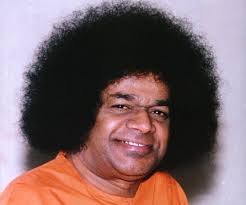
THE MISSION BEGINS
On the 20th day of October 1940, the day after they all returned from Hampi, Sathyanarayana started for school as usual. However, within a few minutes, He returned to the house. Standing on the outer doorstep, He cast aside the books He was carrying and called out, “I am no longer your Sathya. I am Sai”. The sister-in-law came from the kitchen, only to be blinded by the splendour of the halo around Baba’s head! He addressed her, “I am going; I don’t belong to you; Maya (delusion) has gone; My Bhaktas (devotees) are calling Me; I have My Work; I can’t stay here any longer.”
When the brother hurried home on hearing all this, Baba only told him, “Give up all your efforts to ‘cure’ Me. I am Sai; I do not consider Myself related to you”.
In spite of repeated pleas, Sathya would not step into that building again. He moved in, into the garden of the Excise Inspector Sri Anjaneyulu’s bungalow, and sat on a rock in the midst of the trees. People came into the garden from all directions bringing flowers, fruits, incense and camphor to worship Him. The garden resonated with the voices of hundreds singing bhajans (devotional singing) and following the lines of the first prayer that Sri Sathya Sai taught them.
“Manasa Bhajare Gurucharanam Dusthara Bhava Sagara Tharanam “
(O Mind! Meditate on the Feet of the Guru, which will take you across the wearisome sea of Samsara or worldly existence.)
A photographer came with a camera to capture a beautiful picture of the young Swami. He wanted to remove a crude stone that was right in front of Him, but Baba did not heed to the prayer. He clicked nevertheless and lo! When the photo was developed, the stone had become an image of Shirdi Sai Baba!
A few days later, Baba left Uravakonda for Puttaparthi. There, He shifted to the house of Karnam (the village headman) whose aged and devout wife Subbamma attended on Him with love and affection and welcomed all devotees into her spacious house; she spared no effort to make their stay happy and comfortable. Baba often speaks about her dedicated service, working incessantly from dawn to dusk, cooking and making other arrangements for the hordes of devotees who began to land in Puttaparthi every day. As the number of devotees swelled, a mandir (temple) was constructed in February 1947, where He began to reside and grant darshan. On 23rd November 1950, Prasanthi Nilayam (The Abode of Supreme Peace) was inaugurated, which remains till today the central venue for Baba’s darshan and the festival celebrations that take place in His Divine Presence.

Sri Sathya Sai Avatar
This was the story of the Advent of the Avatar and the early years of His life and mission, a mission that would bring millions to His Lotus Feet to taste the bliss of Divine Love and thus transform their lives. In a letter He wrote to His brother Sri Seshama Raju way back in 1947, Sri Sathya Sai Baba emphatically declared the grand purpose for which He has come.
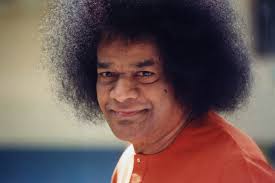
He said:
I have a Task: To foster all mankind and ensure for all of them lives full of Ananda (Bliss).
I have a Vow: To lead all who stray away from the straight path, again into goodness and save them.
I am attached to a Work that I love: To remove the sufferings of the poor and grant them what they lack.
I have a reason to be proud, for I rescue all who worship and adore Me.
The decades that have rolled by since that epochal letter was written have been witness to the grand manner in which His vision has taken shape. The world-class super-speciality hospitals that offer tertiary level medical care free of charge, schools and colleges that impart values-based education, the mammoth drinking water supply projects and the numerous other service projects undertaken by Him stand as a testimony to His selfless Love and His compassion for humanity. However, even more, significant than these activities have been His tireless efforts towards spreading the message of spirituality and inculcating love and brotherhood throughout the world. Through the Sri Sathya Sai Centers and the Education in Human Values (EHV) programmes, thousands all over the world have sanctified their lives by putting into practice His precepts, and by participating in service programmes such as Narayana Seva (feeding of the poor) and free medical camps. Truly, the Sathya Sai Avatar has heralded a golden era in the history of mankind.
Download
Donate
Please consider Donating to keep our culture alive

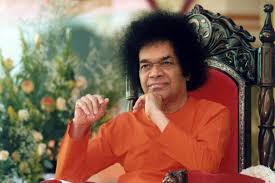

Leave a Reply
You must be logged in to post a comment.